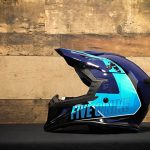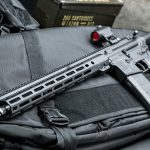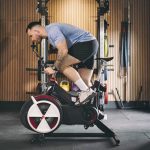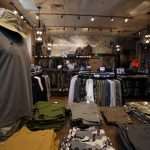Overall sales for the entire winter sport market (including specialty and chain stores), were up 3% in dollars to $323.3 million for the August through October period of 2004, compared to $313.7 million reported last year, according to the SnowSports Industries America (SIA) Retail Audit. Unit sales were down 3.6 percent. Sales at specialty ski and snowboard shops were flat, up only 1 percent compared to last season. In dollars, that translates to $256.6 million in sales compared to $254.3 million in 2003. Unit sales were down from last season 3 percent.
“Twintip skis are seeing promising growth this season as retail prices have come down and inventories have gone up. Telemark ski equipment also continues to gain popularity while all types of parkas are looking to penetrate the market this season” said Christine Martinez, market research manager for SIA, the not-for-profit industry trade group that represents manufacturers and distributors of snow sports products. The SIA Retail Audit tracks and reports sales in all snow sports product categories. This is the first report of six that look at sales through March 31, 2005, the end of the winter season.
TWINTIP SKIS SEE PROMISING GROWTH
Overall equipment sales (alpine, snowboard, Nordic, Telemark and Randonee/AT) were flat, up 1% in dollars as compared to last season with sales totaling $112.8 million through October 2004. In specialty stores, alpine equipment (including skis, ski systems, boots, bindings and poles) grew 4% in dollars this season over last.
Alpine skis, excluding integrated systems, fell 2% in dollars over last season, ending October with $23.2 million in sales. End of the month inventory stood at 462,000 units, only 1% greater than last October. Add alpine skis to integrated systems and total ski sales grew 6% in dollars.
At an average retail price of $351, twin tip ski sales shot up 72% in dollars, reaching $2.3 million in sales for the period of August – October 2004. Last year at this time, twin tips retailed for $379. Retailers supported the product this season showing end-October inventories which were 34% higher than they were at the end of October 2003.
Most manufacturers increased the width of their alpine carver skis, and the result was a substantial 62% dollar increase in sales and $5.2 million for the first three months of the season. Leisure Trends Group has changed the carver max width definition to 69mm to reflect the wider carver skis that are being produced.
Fat alpine skis continue to sell. With an average retail price of $443 (down $31), fat skis increased 8% in dollars.
Midfat alpine skis fell 34% in dollars when compared to the same August to October period in 2003. With $7.9 million in sales so far, midfats accounted for 34% of all alpine ski dollars sold. Average retail prices increased from $315 to $321.
After last season’s strong start, junior ski sales fell off 8% in dollars. End-October inventories were 42% greater than they were a year ago.
At the end of October, total alpine boot sales increased 7% in dollars ($26.3 million in sales) as average retail price moved from $216 to $230. Skiers were looking for more performance out of their boots — high performance boot dollars increased 18%, sport performance were up 10%. Recreation and soft boot dollars fell 15% and 39%, respectively.
Add stand-alone alpine bindings to those attached to integrated systems and total binding sales increased 7% in dollars. However, stand-along binding sales fell 15% in dollars, totaling $7.3 million at the end of October. Similar to junior ski sales, junior alpine binding sales fell (down 28% in dollars), while inventories increased (up 7%).
Alpine poles grew 7% in dollars as adult pole retail prices edged up $2 to $32. Contributing to the higher overall price was the 27% drop in carryover unit sales.
INTEGRATED SKI SYSTEMS ATTRACT INVESTMENT
Integrated ski system sales jumped 23% in dollars when comparing this August to October period to the same period a year ago. Average retail prices for a system dropped from $509 to $443. Retailers continue to invest in integrated systems. At the end of October 2004, integrated ski system inventories were 39% higher than at the end of October 2003 and sales had reached $14.1 million. Out of all integrated ski systems sold so far this season, 50% of the units were midfats and 40% were carvers.
TELEMARK SALES REACH $1.2 MILLION
Telemark ski equipment continues to cruise with a 47% dollar increase, reaching $1.2 million by the end of October. Telemark ski sales shot up 55% in dollars. The average retail price for Telemark skis increased from $335 to $381. Telemark boot and binding sales leapt 25% and 81%, respectively.
Plunging carryover sales (dollars down 39%) helped drag the entire Nordic ski equipment category down 6% in dollars. Nordic skis (down 5% to $1.1 million), bindings (down 26% to $339,000) and poles (down 39% to $192,000) all experienced declines in dollar sales.
SNOWBOARD MARKETS OFF TO SLOW START
Snowboard equipment got off to a slow start this season. From August through October, snowboard equipment sales (including snowboards, boots and bindings) were down 9% in dollars with a total of $36.6 million in sales. Snowboards (down 9% to $19.2 million), boots (down 13% to $9.2 million) and bindings (down 3% to $8.2 million) all experienced dollar decreases this season over last.
All mountain boards were the only boards to turn in positive numbers (up 4% to $2.2 million by the end of October). All mountain accounted for 13% of all board units sold so far this season. Unable to match last season’s phenomenal numbers, freestyle board dollars slid 6% while freeride boards, the largest category with 38% of all snowboard units sold, dipped 5% in dollars. Retailers cleared out their extra snowboard stock – carryover unit sales plunged 24% with $1.9 million in sales at the end of October.
Step-in boots and bindings continued their decline this season with 52% and 73% drops in dollar sales, respectively, over last season.
Snowboard apparel sales followed the trend of snowboard equipment and slumped 22% in dollars, ending October with $11.8 million in sales. Snowboard tops plummeted 29% in dollars while snowboard bottoms fell 19% in dollars. Last season at this time, men’s snowboard tops outsold women’s 2.1 to 1. This season, that ratio dropped to 1.7 to 1.
After a strong start last year, junior snowboard apparel lost steam. Junior top and bottom dollars sunk 47% and 36%, respectively.
PARKAS ON TRACK TO HAVE BIG YEAR
Specialty apparel sales (including tops, bottoms, suits and snowboard) were up 3% in dollars to $79.9 million at the end of October. At an average retail price of $162, insulated parka sales rose 9% in dollars. Retailers are planning on a big year with end-month inventory units up 14% over last October. Most of this increase was in women’s and junior’s products. Soft shell parka sales slowed down after nearly triple digit growth in the past two seasons. Sales still managed to jump 29% in dollars as average retail prices remained at $180. Men’s parkas outsold women’s parkas 2.2 to 1. After a tough season last year, shell parkas rebounded with a healthy 16% dollar gain. Average retail prices jumped from $145 to $154. Vest and fleece sales also improved with dollar sales up 32% and 15%, respectively, over last season.
ACCESSORY SALES ON PAR WITH LAST SEASON
The accessories category in specialty stores remained flat from August – October, up 1% in dollars over the same period in 2003. Equipment accessories increased 1% due to healthy dollar gains from goggles and sunglasses (up 12% and 9%, respectively) and hefty dollar drops from snow decks/skates (down 57%) and snowshoes (down 65%).
Apparel accessories also saw sales increase 1% by the end of October. Winter boots continue to skyrocket with sales up 52% to $2.2 million at the end of October. However, dollar declines in both headwear (down 12% to $4.5 million) and gloves (down 9% to $3.4 million), helped keep category growth down.















